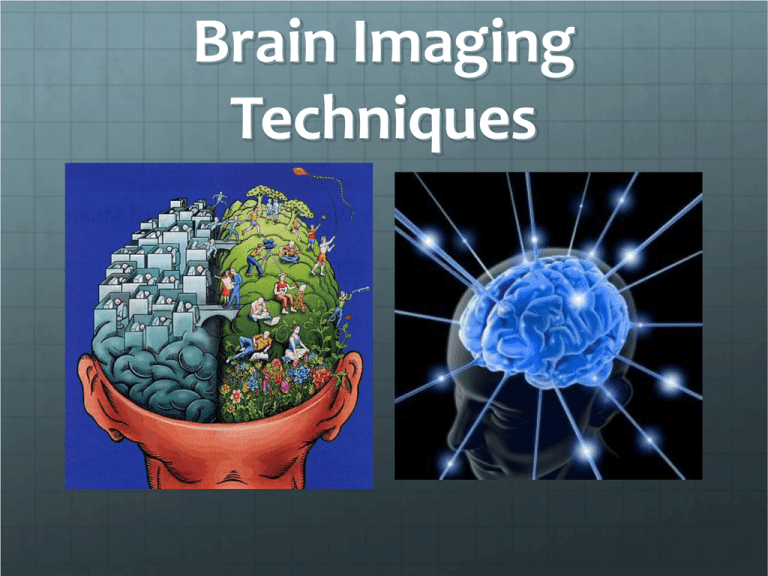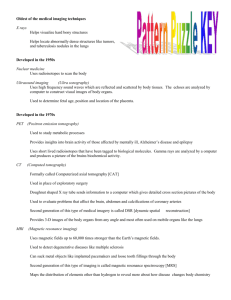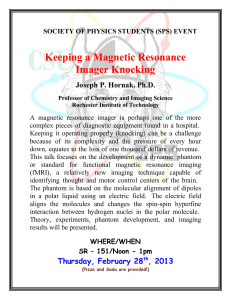Brain Imaging Techniques
advertisement

Brain Imaging Techniques Phrenology Figure 2.1 A wrongheaded theory Myers: Psychology, Eighth Edition Copyright © 2007 by Worth Publishers X-Ray Transmission Imaging Shoot x-rays through the patient onto detector film. Different tissues absorb and deflect x-rays to different degrees. The film is exposed less when x-rays encounter higher density material like bone. Low resolution. Hard to distinguish between blood vessels and tissue without an injection of iodine or barium Electroencephalography Electrodes on the scalp record electrical activity Each electrode provides a signal from a particular region The electrode can then provide unique electrical activity in that region Figure 2.12 An electroencephalograph providing amplified tracings of waves of electrical activity in the brain Myers: Psychology, Eighth Edition Copyright © 2007 by Worth Publishers Computerized Tomography Imaging of a cross sectional slice of the body using Xrays. Invented by Dr. G. N. Housfield in 1971. Received the Nobel prize in medicine in 1979. The method is constructing images from large number of measurements of x-ray transmission through the patient. Computerized Tomography Example of cross-sections through several parts of the body: skull, thorax, and abdomen, obtained by computed tomography. Magnetic resonance imaging (MRI) Magnetic resonance imaging exploits the existence of induced nuclear magnetism in the patient. Magnets with an odd number of photons or neutrons possess a weak but observable nuclear magnetic moment MR images provide excellent contrast between various forms of soft tissues. Planes of Image Acquired Coronal Horizontal Sagital Brain section Spinal cord Positron Emission Tomography Positron emission tomography measures cerebral glucose metabolism, using a radioactive tracker/ marker of neuronal activity (usually radioactive glucose or even oxygen) Measures the amount of glucose present in general locations of the brain, shows relative activity levels Not very clear resolutions, only shows general areas Whole body PET Functional MRI fMRI is a technique that images intrinsic blood signal change with magnetic Resonance imagers. Changes in neuronal activity are accompanied by focal changes in cerebral blood flow (CBF), blood volume (CBV), blood oxygenation and metabolism. These physiological changes can be used to produce functional maps of mental operations. Figure 2.28 New technology shows the brain in action Myers: Psychology, Eighth Edition Copyright © 2007 by Worth Publishers Figure 2.20 The hypothalamus Myers: Psychology, Eighth Edition Copyright © 2007 by Worth Publishers Lesion Electrical Stimulation (Open-brain surgery) Case Study






